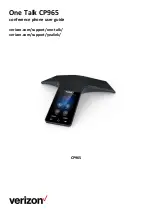
67
Personal medical devices
Cell phones may affect the operation of pacemakers and other implanted
equipment. Please avoid placing the cell phone over the pacemaker, for
example in your breast pocket. When using the cell phone, use it at the ear
on the opposite side of the body to the pacemaker. If a minimum distance
of 15 cm (6 inches) is kept between the cell phone and the pacemaker,
the risk of interference is limited. If you have any reason to suspect that
interference is taking place, immediately turn off your cell phone. Contact
your cardiologist for more information.
For other medical devices, please consult your physician and the
manufacturer of the device.
Driving
Please check if local laws and regulations restrict the use of cell phones
while driving or require drivers to use handsfree solutions. We recommend
that you use only Sony Ericsson handsfree solutions intended for use with
your product.
Please note that because of possible interference to electronic equipment,
some vehicle manufacturers forbid the use of cell phones in their vehicles
unless a handsfree kit with an external antenna has been installed.
Always pay full attention to driving and pull off the road and park before
making or answering a call if driving conditions so require.
Emergency calls
Cell phones operate using radio signals, which cannot guarantee connection
in all conditions. You should therefore never rely solely upon any cell phone
for essential communications (for example medical emergencies).
Emergency calls may not be possible in all areas, on all cellular networks,
or when certain network services and/or cell phone features are in use.
Check with your local service provider.
Antenna
This phone contains a built-in antenna. Use of antenna devices not
marketed by Sony Ericsson specifically for this model could damage
your cell phone, reduce performance, and produce SAR levels above
the established limits (see below).
This is the Internet version of the User's guide. © Print only for private use.












































